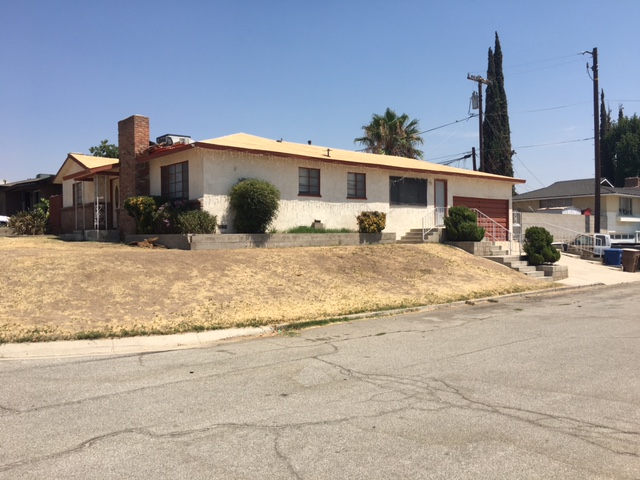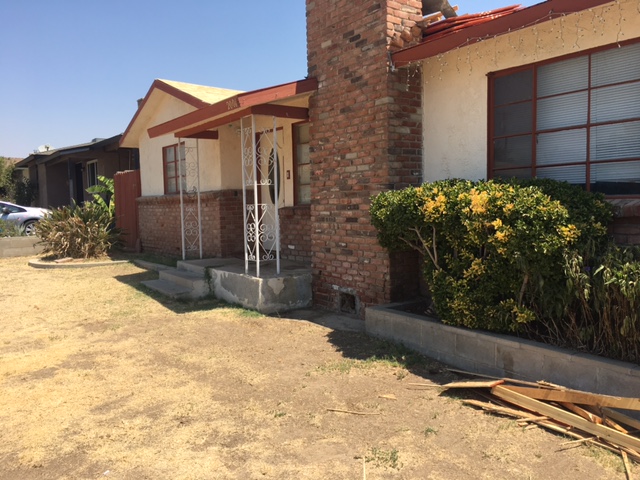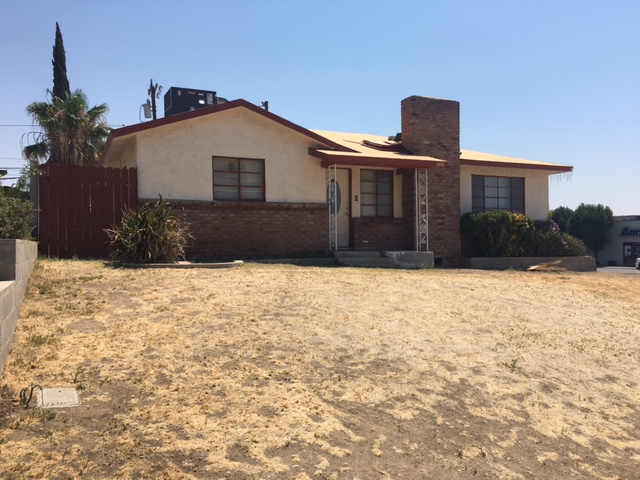As I commented in last weeks teaser for this blog, this was a deal that had more twists and turns in it than a Coney Island roller coaster. The property in question, which I will refer to as the money pit just sold. We literally closed escrow on May 31. But it took eight years to get here. It started out as a flip that a fellow investor, I shall call David, picked up in 2014. I came in as an investor and loaned money to David to cover the cost of the rehab. I eventually became the owner in 2017. Over the course of those eight years the house was a flip, then it became a rental, then went into foreclosure, became a rental once again, and finally, a group home. But I’m getting ahead of myself. First, a little information about David.
David and I met sometime in the second half of 2013. I was a novice investor, having only recently gotten into the game at the very end of 2012. in fact, my first deal was a flip I financed in April of 2013. David and his then girlfriend were only slightly more experienced, having started investing in 2012. But this begs the question, when are you a real estate investor? In David’s case, I think the real motivation for investing came from his girlfriend and he was along for the ride. Absolutely nothing wrong with that but, at least on the investment side of things, hers’ seemed to be the dominant personality. Like me, they did all the typical investor things. They attended seminars, they actively sought out investment properties, they started attending meetings at the local REIT which, by the way, is where we met. But they hadn’t actually done a deal. So, were they investors? By way of contrast, I had been curious about real estate investing for a number of years. Earlier in 2012 I came into some money that I could now invest. (Who knew you didn’t need money to invest in real estate?) In December I attended a Fortune Builders investing seminar. Does that make me investor? Or did I become an investor when I pulled the trigger on that first deal the following April? Even though I had not taken possession of the property? Kind of a gray area. My personal opinion is that you can call yourself an investor all you want but until you actually have skin in the game, or your name appears on the title of a property, you aren’t really an investor.
Anyway, back to David and his girlfriend. She was very good at finding deals. She had uncovered one deal in particular that was very interesting. An older couple owned the house and had passed away within months of each other, leaving the house vacant. They had raised five children in the house, all now adults, and none of whom lived in the state. The house had been empty for a while and was really starting to show signs of having been vacant, a lot of graffiti, dead lawn overgrown with dead weeds, tell-tale signs of vagrants using it as a crash pad/drug den. Apparently, it was being held in a trust that all five siblings participated in. The only way to sell the property was if all five agreed. Unfortunately, there was one holdout who felt that the offer price was too low. While trying to negotiate a better price, one of the sibs passed away. This meant all the paperwork was now invalid and they would have to redo everything. And they still had not gotten the one holdout sib to agree to a price.
With all of this going on, David found another property, quite literally in his backyard. The house was across the street and two doors down from where he lived. Okay, so maybe it was in his front yard. It was situated on a large corner lot facing a frontage road that paralleled a major throughway. It was a split wing design that included two bedrooms and one bathroom in one wing. It also had a large living room, which included a brick fireplace, and a dining area. The kitchen was located about the middle of the house between the two wings, A third bedroom, off of the kitchen, could double as an office. On the other side of the kitchen there was a large family room with a second fireplace. The garage had been converted, with permits, into a fourth bedroom, and adding a second bathroom. A small laundry room, accessible from the back patio, had been added with the garage conversion. It also had beautiful hardwood floors throughout, which was a big plus. Built in 1954, the house had been empty for a while and needed some TLC.
David contacted the owner, who was willing to let the property go for $72,000. David estimated it needed about $30,000 in repairs with an ARV of around $150,000. They found a hard money lender that would loan them the $72,000 needed to make the purchase. Knowing I had some cash to invest, they approached me about funding the $30,000 in repairs. I had recently rolled a pension over into a self-managed portfolio, meaning I could do anything I wanted with the money. So, I loaned them $30,000 out of my pension at 10% plus a percentage of the profit, all deferred until the sale of the house.
Things sort of went downhill from there. When doing a rehab there are certain things you should look for. For example, one of the first things you noticed about this house is that it had a wood shake roof. While they look nice and were very trendy in the 50s and 60s, they have, in recent years, come under fire because, well, they are fire hazards. They also tend to attract termites, which are prevalent in Bakersfield with its hot, dry climate. It is also next to impossible to get insurance on them and, if you do, you pay a high premium through the nose. Another thing you look at is windows. In this case the house had the original, hand crank windows that had been installed when it was first built. As I just mentioned, Bakersfield is hot and dry with 100-degree temperatures very common in the summertime. If you are going to do a proper rehab you need to replace the windows with double paned glass. They help to maintain cooler temperatures in the hot summer months and reduce reliance on AC units and high electricity bills. If you looked at the other houses in the neighborhood, all built at roughly the same time, most of them now had double paned windows. If you are going to achieve that $150,000 ARV, replacing all the windows is a no brainer. Finally, kitchens and bathrooms. Any experienced investor will tell you that that is where you’re going to make your money. At the very least you need to install granite countertops. Depending on the condition, you may need to replace all of the kitchen cabinetry. If you do that you should upgrade the hardware. Even if the cabinets were in good shape, they’re at least going to need a good coat of paint and new hardware. Brushed brass or bronze is popular right now and wood grain cabinets, once very trendy, are passe these days. Solid colors like whites or beige or brown or even grey is the look.

Strangely, David did not do any of these things. I take responsibility for a lot of this and it proved be my first hard lesson as an investor. I was a green investor and, with the benefit of hindsight, I would have done things differently, and I would do so in the future faced with a similar situation. Allow me to explain. When working with Kevin on that first deal, he was an experienced investor and knew what he was doing. I came in as a cash investor, handed him the money and trusted him to do the rest. He did his job admirably and, when he sold the property, I made a nice little profit. Other than writing a check, my invovement was practically nil. in retrospect, I guess I got spoiled. David was as inexperienced as I, perhaps more so. I should have taken a more active role, especially with this being David’s first flip. I should have watched where he was spending my money and made sure he was making the right improvements and upgrades that were going to get me the most bang for my bucks.
David did his beginners version of a rehab, he and his girlfriend doing much of the work themselves. They went through my $30,000 and put in another $10,000 of their own money. Three months later they put the house on the market asking $145K. After two months, not surprisingly, the best offer they got was $122K. At this point David contacted me about going to plan B and turning the house into a rental. He had already contacted the holder of the first and they had agreed to extend the terms of the loan for five years. Would I do the same? This became lesson number two. David felt he’d be able to bring up the curb appeal inexpensively and put it back on the market the following spring. Naively, I agreed, still believing David knew what he was doing. I should have, at the very least, insisted on interest only payments on the note but I agreed to continue to defer the payments. He eventually rented the house out to a large family and it was here I discovered his inexperience as a flipper was only exceeded by his inexperience as a landlord as he rented the house to the family from hell.


This was lesson number three which, fortunately for me, I was able to learn from David’s perspective. Now we’ve all heard about these families, hopefully we’ve never had to deal with one ourselves. Full disclosure, I rented to one such family but, in my defense, I was using a property manager and they were the ones that placed them. Since I started self-managing all of my properties, I’ve never had a problem with a tenant. Anyway, this family proceeded to trash the house. David finally had to evict them, about ten months into the lease, and spend a bucket full of cash repairing all the damage. For the next tenant he decided to use a property manager. This was an improvement but, according to David, he still had problems with these tenants. The reality was a lot of David’s problems were of his own creation.
In June of 2017 David contacted me and asked if I wanted to take over the property. It was currently vacant, as the tenants had moved, so I called Kevin, who had now become my business partner, and we went over to have a look at it. We already knew about the issues with the roof, the windows, and the kitchen but there were other issues as we soon discovered. The house was built on a slight slope so when they converted the garage the laundry room in the back was about two feet below ground level. There were a set of three steps leading down into the room. These became a set of class five rapids when we had heavy rains and the laundry room, without a drain, filled up. The water seeped through the common wall into the bedroom, destroying the wall and the flooring in the process. David had repaired the floors and the wall, but he hadn’t fixed the problem. Meaning he hadn’t put a drain in the floor so the next time it rained we would have the same problem. Obviously, this would have to be addressed and added to our repair list.
The HVAC unit had gone out the year before and David had taken out a personal loan to cover the replacement cost. There was a balance due on that loan of about $5,000 and David wanted us to pay it in the escrow. Initially we were okay with that arrangement until we discovered David also owed $5,000 in back property taxes. We told him the $5,000 we had set aside to pay off the loan would now be used for the tax bill. Since this note was unsecured by the property, i.e. there wasn’t a lien on the property, he was on his own. We were offering to pay off the first, take over the second which was owed to me, and pay the back taxes. He was going to walk away with no cash and, in fact, a $5,000 loan still pending on the HVAC unit. Then there was the big one. He had missed a payment on the first and the lender had quickly started foreclosure proceedings. This put me in a difficult position. We needed to act quickly or they would go through with the foreclosure and I would lose my $30,000 stake. Meanwhile, David was having second thoughts because he wanted the HVAC loan paid off. It was a bit of a standoff, and it came down to who would blink first. David realized there wasn’t anyone else that was willing to step in and rescue him, so he blinked and agreed to our terms.
Before you think we were taking advantage of David’s position, let me point out that we were paying off the first ($72,000), taking on a $30,000 second which, with accrued interest, was now standing at slightly over $40,000, and we were paying off the $5,000 tax bill. In addition, we were going to replace the roof, upgrade the kitchen and bathrooms, fix the drainage problem in the laundry room, as well as some other odds and ends. All total we were going to be into the property for a minimum of $145,000. The ARV was about $170,000, if we pushed it. So, we were at pretty close to a break even at this point. God forbid we go overbudget and blow out any sembalance of profit. And it wasn’t our fault David had made a number of poor decisions. Obviously, we weren’t in a position to flip this property, so it was going to be a rental.
We had to move quickly and bypass any type of bank loan as that would take far too long for our immediate needs. Kevin called in an investor friend who put up $94,000. That was enough to pay off the first including the fees they charged for the foreclosure. With what was left and about $8,000 of our own money, we replaced the roof, paid the tax bill, added a drain in the laundry room, added granite countertops in the kitchen, painted, and made some other small but necessary repairs. Drywall patches in the bathroom, landscaping, added an irrigation system, replaced the water heater and stove, etc. We decided that, since it was going to be a rental, the windows could wait.
And that’s how we became the proud owners of The Money Pit. But that’s only the start of this story. Things were already going downhill when David handed us the keys and that momentum is sometimes hard to stop. Just when you think things can’t get any worse, they do. But, my dear readers, you are going to have to wait until next week for that part the story. Until then, as always, keep your eye on the ball and swing for the fences.
